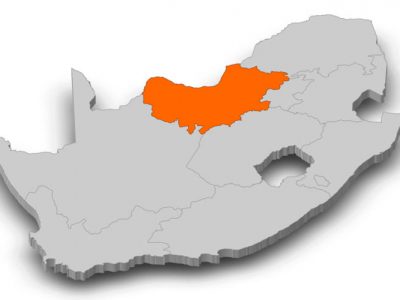
The 2023 World Competitiveness Report through the Institute for Management Development (IMD) had some bad news for the Philippines, placing it 52nd out of 64 polled countries. This represented the steepest decline in Asia in addition to a significant drop from the previous year when the county ranked a more encouraging but nonetheless somber 45th place.
A big reason behind this insufficient competitiveness was the nation's poor infrastructure, particularly when contrasted with those of its neighbors in Southeast Asia. This is particularly clear when assessing the country's information and communications technology (ICT) infrastructure, particularly in the quantity of telco towers.
With the recent massive public and private investments in digital infrastructure, Philippines could provide the basic connectivity necessary for economic resilience and business continuity during the COVID-19 pandemic. Nevertheless the country still lags behind its neighbors in the ASEAN, having just 17,850 towers in 2023, each serving 4,090 users. In contrast, during the same period, Thailand had 52,483 towers and 991 users for every tower. Vietnam posted even more impressive numbers, with 90,000 towers and 756 users per tower.
Why Do We Require more Telco Towers?
The tower-to-user ratio is a rough metric for assessing the information handling capabilities of the geographic area. It is quite imprecise, because it does not account for the amount of transmitters per tower nor the particular technology used by the transmitters. Overall, however, tower-to-user ratios can give makes sense of simply how much capacity an area has for serving data users.
Some capacity issues might be solved by increasing the quantity of transmitters and telco suppliers that could use each tower, via a common tower policy. Up to the Philippines' common tower policy was presented in 2023, the few telco towers within the Philippines also had a low density of transmitters. This meant that even when users had coverage, they might quickly run into problems with network congestion.
However, even with a higher density of transmitters, a low quantity of towers will always be problematic when it comes to range and coverage. This is especially evident within the Philippine countryside, where lots of inhabited areas remain practically unconnected. There is also a practical limit towards the quantity of equipment that may be put on each tower, meaning having more towers available is generally preferable for increasing network capacity.
How Many Towers Are essential?
In 2023, the Philippine Department of knowledge and Communications Technology (DICT) projected the Philippines will need at least 50,000 towers to meet the nation's ICT needs. The Build, Better, More infrastructure initiative (formerly the Build, Build, Build! program) is currently committed to making this number of towers open to telcos, with a focus on adding more within the countryside.
Before the common tower policy was rolled out, the projected timeline for meeting this goal was around 10 years, beginning with 2023. It was because only telcos were permitted to build towers, and lots of lacked the incentive to do so outside of areas with already high demand.
After the roll-out of the common tower policy, however, third-party tower providers received the go-ahead to go in the market. Consequently, the timeline to accomplish the 50,000 towers was greatly compressed to three to five years.
How Third-Party Providers Help Satisfy the Philippines' Connectivity Goals
Empowered through the common tower policy, third-party tower providers are now able to build and operate towers for multiple telcos to rent. This has led to several private companies stepping directly into build the digital infrastructure the Philippines must stay competitive.
Unity Digital Infrastructure, some pot venture between the Aboitiz InfraCapital (AIC) and Partners Group, is a prominent participant. Due to the company’s extensive presence in the Philippines, along with AIC's and Partners Group’s market knowledge and knowledge of the building all-kinds of high-quality infrastructure, chances are it will play a significant role within the Philippine national government's initiatives to improve Filipinos' access to reliable connectivity.
The 50,000 tower requirement for the nation is predicted to be met much more quickly with the aid of Unity along with other common tower developers than by the telco providers themselves. To speed up construction and bring installation costs down, these providers can leverage their specialization in the development of these infrastructure assets.
Due to its value offering like a “one-stop” provider of tower services, Unity is anticipated to become a preferred choice for telecos. Additionally, the Philippines’ major telcos already have existing working relationships with Aboitiz InfraCapital, Unity's main backer, through its small cell site assets, making it a recognised player within the Philippine telecommunications industry.
Common Towers Can help Bridge the Digital Divide
As it stands, the Philippines is experiencing a significant digital divide. Internet me is dramatically uneven among different parts of the nation, with 84% from the National Capital Region residents accessing the internet and just 47% of Mindanaoans and 62% of Visayans getting the same privilege. The remainder of Luzon away from NCR doesn't fare much better, with usage at just 65%.
This is really a direct consequence of previous tower policies that disincentivized the rise of tower coverage beyond already-developed areas. The space between Filipinos with reliable internet access and people without has widened gaps in information access and economic opportunity for rural and concrete Filipinos, to the detriment of the entire country.
The Philippines has other problems that affect its competitiveness which have little related to digital infrastructure. However, having secure and democratic internet access for those is likely to be foundational in solving the country's other conditions. And also to accomplish this goal, having enough towers to pay for the nation is probably a non-negotiable requirement.










